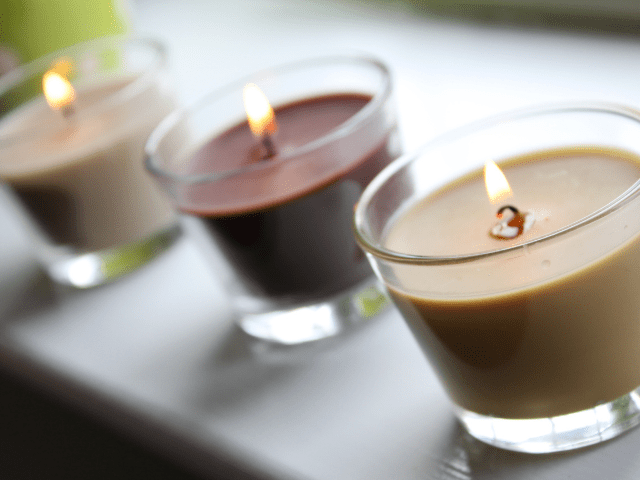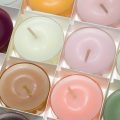Table of Contents
What are the different candle additives? Candles come in various shapes, sizes, designs, and fragrance. What are the different candle additives? You can choose from a wide array of candles in the market today; and even have an option to customize it. What are the different candle additives? There are various options of candles you can choose from nowadays; some candles are designed to freely standup; while some are intended to be a filler of a candle container or vessel.
Types of Candle Additives
Candle Wax
What are the different candle additives? The first one on the list is wax; and the reason is because using or buying a quality wax can produce a quality candle. It doesn’t matter how big or how fragrant your candle is if the wax isn’t of good quality. There’s a misconception among newbie candle makers that the more fragrant the candle is; the more durable or stronger it is. That’s not the case because if you put a fragrance it will start filling up the pores of the wax; and once it’s all filled up, there’ll be no room for the fragrance oil anymore, and you’ll end up wasting a lot of it; fragrance oils are quite expensive.
Measurements
What are the different candle additives? It’s also important to note that you shouldn’t buy more than 1.5 oz. of fragrance per pound of wax, otherwise the candles you’ll make can end up becoming a fire hazard. It’s best to just use pre – blended wax for candle making; this way you don’t need to add any other additives because the wax manufacturer already did the job for you.
Whenever you’re dealing with candle wax, make sure to read the instructions before using it. Temperature is very important in candle making as well especially during the wax stage; make sure to never heat up your wax to over 250 degrees Fahrenheit otherwise your wax will heat up and burn; and you’ll have to start over again. You can’t just pour fragrance oil to cover the burnt odor.
Candle Scent
What are the different candle additives? When it comes to using fragrance for your candles; it’s best that you buy fragrance oils that are made for candle making. You should never ever use alcohol or some kind of perfume to add to your wax candle because it can become a fire hazard. You have many options when buying good fragrance oils for candle making purposes, some are quite expensive while some are more diluted than others.
If ever you decided to buy a concentrated type of fragrance oil, you should only apply 1 to 1.5 oz. per 1 pound of wax. Never go beyond 1.5 oz. otherwise you’ll see it at the bottom of your pouring pot because the wax wouldn’t be able to handle too much. There are companies out there that offers concentrated fragrance oils which can also be used for other types of candle wax (soy wax, gel wax etc.), and also bath products.
Color Blocks
What are the different candle additives? Color blocks are usually the most inexpensive yet quality means when coloring a candle. However, it could be quite difficult to use especially if you’re a newbie; because you won’t always get accurate color results every time. Some people use a gram scale to ensure that the amount of color is just right but it can still fail. Some candle makers only use color blocks whenever they’re making dark – colored candles only.
Liquid Dye
What are the different candle additives? Liquid dye can be a better solution for color accuracy but because of the chemical it contains, it can sometimes produce a bad odor. This is why some candle making experts don’t use it when they’re trying to create rich – colored candles. As a rule of thumb, some people opt not to use liquid dye if they need more than 10 drops of it per 4 pounds of wax because more than 10 drops per 4 pounds can make your candles produce a bad chemical smell.
Color Chips
Color chips are usually expensive, and it’s also not finely ground making it also quite difficult to use when it comes to achieving color accuracy. We do not recommend color chips but of course it’s up to you whether you’ll try it or not.Crayons aren’t an option if you want to produce a high – quality colored candle, and it’s because crayons can clog the wick causing it to become a fire hazard. Never use this even if for some people it works out.
Other Type of Additives
What are the different candle additives? Lots of candle makers use different kinds of candle additives mainly because it enhances the quality of the candles they produce. However, we do not recommend that you add a candle additive if you’re going to use pre – blended wax. We will discuss below on what the properties of each additives contain so that you can better decide what’s best to use in different kinds of candles/ wax you’ll be making. Do keep in mind that the batches of candle wax will vary which is why you need to know how to adjust accordingly. See the following additives below:
Vybar
Vybaris is primarily used to enhance the “scent throw” of the candles. This additive can also make the candles more appealing, neat and opaque. It can also produce a marble – look at the top of the container candle. This additive also increases the melting point of the wax, and hardens the candle wax a little bit more. If you plan on adding the Vybarto additive, it is best that you only use about ¼ to ½ teaspoon per 1 pound of wax, anything more than this measurement will make your wax overpower your fragrance oils.
There are two kinds of Vybar namely; Vybar 103 which is mostly is used for votive/molded candles, and the Vybar 260 which is commonly used for single pour wax candles.
UV Light Protector
What are the different candle additives? The UV Light Protector is a very expensive kind of candle additive. If ever you would want to start selling your candle products to large suppliers/wholesalers, or simply start your own candle business, then it’s best to not start using this unless of course the customer wants it.
The UV Light Protector additive can however improve the color quality of your candles, and also sustain its normal color even if it’s placed under direct sunlight. Candles without UV Light Protector that’s placed under direct sunlight can fade its color. But even if you add a UV light protector, it’s still best to tell your clients to not let it burn under direct sunlight as it may become a fire hazard if not supervised. The colors that are usually fading when placed under the sun are burgundy, pink, blue, and violet.
If ever you opt to use a UV light protector, we recommend only using about ¼ teaspoon per 4 pounds of wax. If ever you find that the colors of the candles are still fading/ discoloration even after applying this additive then the problem may be because of the actual color of the fragrance oil you used.
Petrolatum
What are the different candle additives? This additive comes in handy if your wax won’t sting to the sides of your candle containers or your jars. You can add about ¼ cup per 4 pounds of wax. This additive will help increase the number of pores in your candle wax thereby allowing it to absorb more fragrance oils. However, the downside is that it can also cause a smoky flame when the candles are burned
Crisco
Crisco can help lessen the wet spots in the wax, increases melt pool, absorb more fragrance, and also decrease wasting fragrance oil on the bottom of your pouring pot. It’s best that you use only 1 to 2 oz. of the Crisco Shortening additive.
Candle Wicks
What are the different candle additives? When it comes to candle wicks, it somehow got a bad rep especially in the U.S. because the media reported to the public that candle wicks contain lead. The thing is that those wicks with lead content were mostly produced from other countries outside the U.S. The fact of the matter is that there isn’t any wick manufacturer in the United States that produce lead – core wicks because most of them uses zinc to create candle wicks which is the best kind that one can use for candle making. Sometimes customers don’t get that zinc is not a toxic content like lead.
Wick Reco
What are the different candle additives? This is why we recommend you use zinc – core based wicks because it’s much better and burns nicely than using cotton wicks. It’s also much safer than lead – based wicks. Zinc – core wicks usually burn cleaner compared to other kinds of candle wicks in the market, and it allows the entire candle wax to burn without any left overs making it worth your money or your customer’s money. You’ll see the difference if you have tried using cotton wicks or other core wicks. What are the different candle additives? We recommend that you use two pieces of zinc – core wicks that measures about 5 inches especially if you’re going to use a 16 oz. jar though this is up to you because usually candle businesses only use 1 piece of wick.






 I love to write books about family, dating, household, and healthy living. My books are written for everyone in an easy to read and understandable style.
I love to write books about family, dating, household, and healthy living. My books are written for everyone in an easy to read and understandable style.